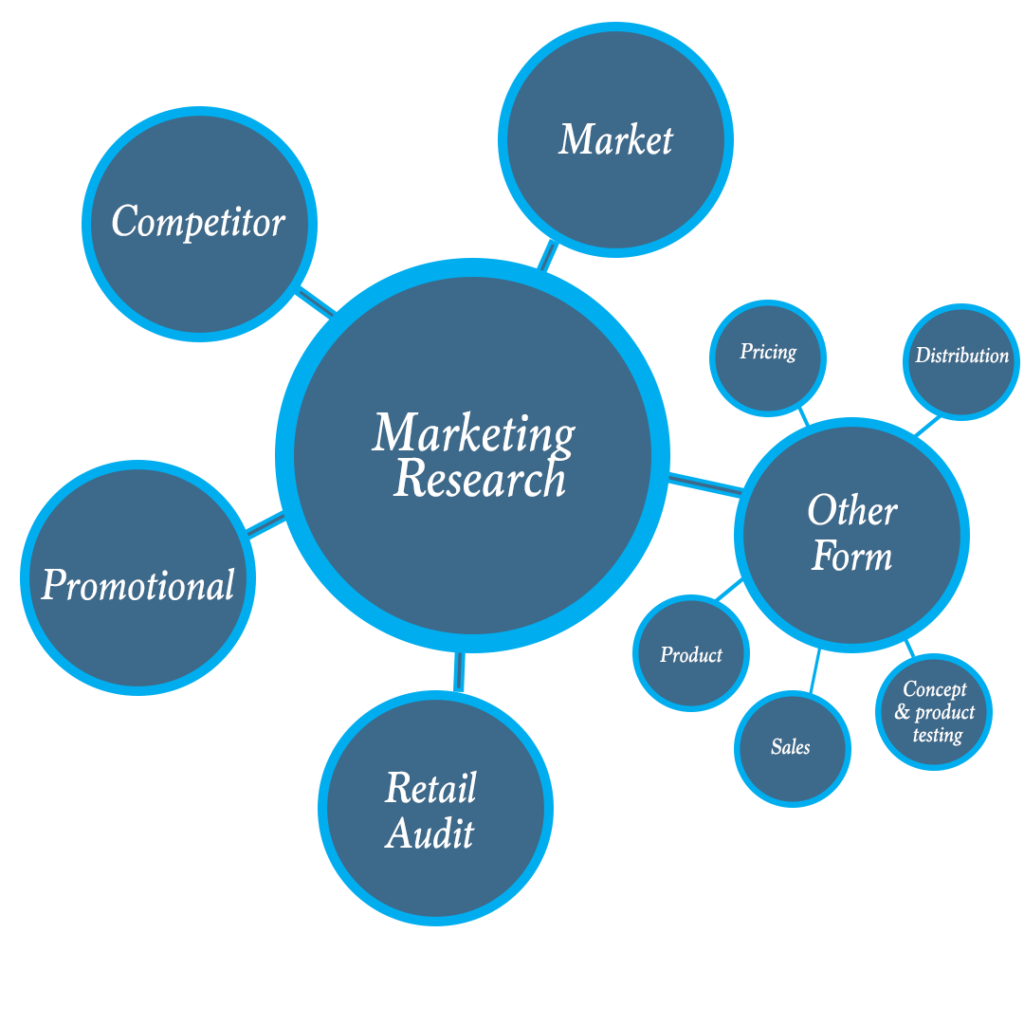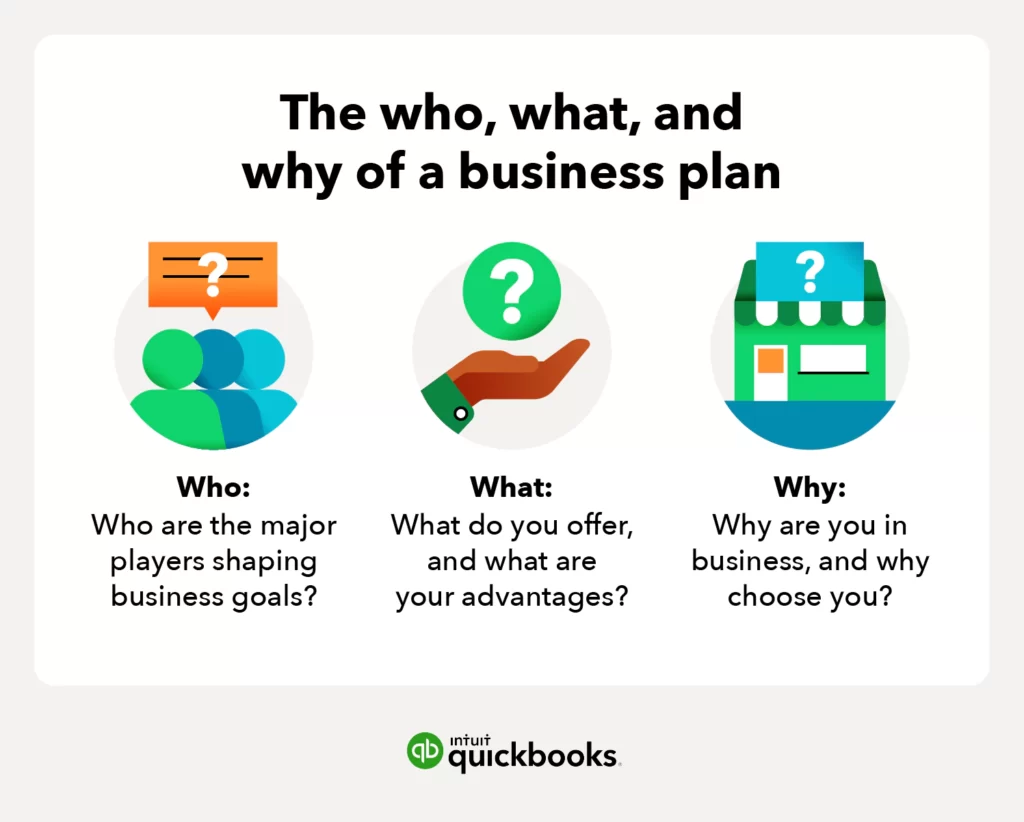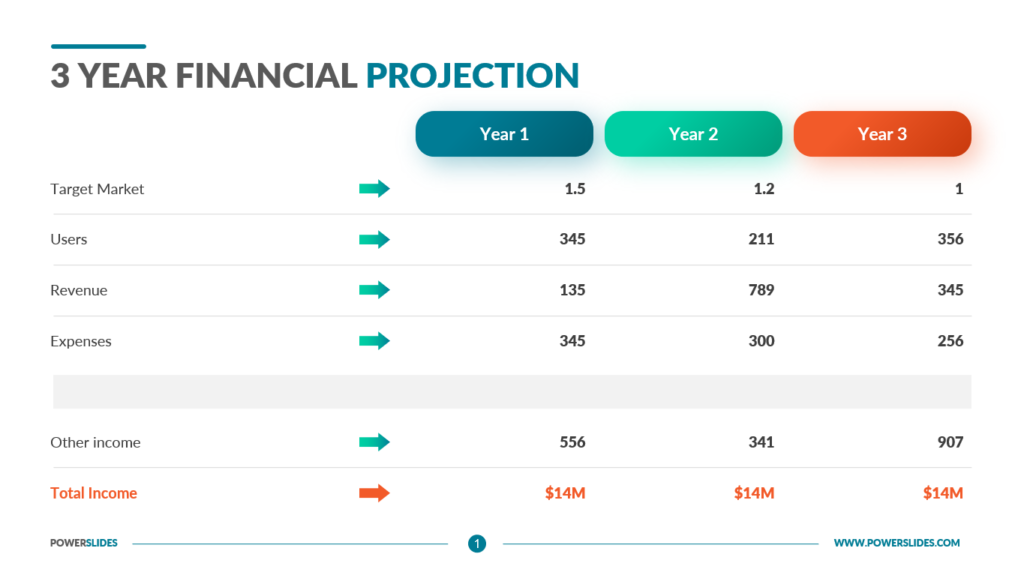How to Start A Small Business: A Guide To Success
In a world where everyone is vying for a slice of the market, there's an undeniable allure to carving out your niche. Whether turning a passion into a profitable enterprise or solving a problem no one else has cracked, the prospect of starting a small business comes with undeniable challenges and rewards. This article, “Starting A Small Business: A Comprehensive Guide to Success,” aims to illuminate the path to entrepreneurship and help you navigate the exciting yet intricate world of small business ownership.
Starting a small business is no small feat. It takes courage, grit, creativity, and good fortune. But most importantly, it requires careful planning and execution. Small businesses are the backbone of many economies worldwide, contributing significantly to job creation and economic development. As of 2023, there were approximately 33.2 million small businesses in the U.S. alone, making up nearly 99.9% of all U.S. businesses. What's more, they employed 47.1% of the nation's workforce.
In this comprehensive guide, we'll outline the steps required to start a small business successfully, from crafting a thorough business plan to securing the necessary financing to finally setting up your operations. We'll delve into the critical decisions you must make, the challenges you might encounter, and the strategies that could help you sail smoothly through them. Whether you dream of opening a cosy coffee shop, launching an innovative tech startup, or setting up a local consultancy service, this guide will equip you with the tools and knowledge to turn your entrepreneurial dreams into reality.
Embarking on your entrepreneurial journey can feel like standing at Mount Everest's feet, especially if it's your first venture. But remember, every successful business—a homegrown mom-and-pop store or a global conglomerate—once stood where you're standing now. Their climb to the top began with a single step. It's time for you to take yours.
So, let's get started. In the following sections, you'll find a detailed roadmap designed to navigate the path to your small business success. Welcome aboard, future business owner. Your journey begins here.
Table of Contents
Identifying A Business Idea

Embarking on the journey of starting a small business begins with an exhilarating quest: discovering an idea that not only ignites your passion but also holds substantial potential for growth. It is crucial to delve deep into your interests, skills, and market observations to identify a concept that resonates with you and has a promising market niche. You can unlock a wealth of viable business ideas by thoroughly addressing fundamental questions such as what excites you, what talents you possess, and where you perceive unmet needs in the market.
Passion is the fuel that propels entrepreneurs forward, enabling them to withstand the challenges and uncertainties that lie ahead. Reflect on the aspects of life that invigorate and captivate your attention, whether it be a hobby, a cause, or an industry. Consider the subjects that consistently evoke your enthusiasm and bring you a sense of fulfilment. Exploring these areas will motivate you to tackle the demands of running a business and increase the likelihood of creating a product or service that genuinely resonates with your target audience.
While passion is paramount, it must be complemented by a realistic assessment of your skills and expertise. Take stock of your capabilities, experiences, and knowledge to uncover areas where you excel. Assess your strengths in various domains, such as leadership, creativity, problem-solving, communication, or technical proficiency. Identifying your core competencies will provide you with a solid foundation to build upon and allow you to leverage your existing skills to your advantage, enhancing your chances of success.
In addition to self-reflection, a comprehensive market analysis is vital for identifying gaps and untapped opportunities. Observe the current business landscape and identify areas where unmet consumer needs or existing solutions fall short. Assess industry trends, analyse emerging markets, and scrutinise consumer behaviour to understand the dynamics comprehensively. By identifying underserved niches or new market segments, you can position your business uniquely, catering to a specific audience and offering something new and compelling.
Moreover, conducting thorough market research will help you gauge your business idea's potential demand and feasibility. Study your target market, assess the competition, and evaluate the economic viability of your concept. Understand your potential customer's pain points, desires, and preferences, and identify how your business idea can address these effectively. By aligning your passion and skills with a genuine market need, you create a powerful combination that drives customer engagement and sets the stage for growth.
Ultimately, the first step in starting a small business requires an introspective journey that blends your passion, skills, and market insights. By answering the critical questions of what inspires you, what talents you possess, and where you can bridge the market gap, you can uncover an exciting business idea with the potential for personal fulfilment and entrepreneurial success. Embrace this exploratory process, and let your creativity, knowledge, and dedication guide you towards shaping a thriving business that leaves a lasting impact.
Conducting Market Research

Once you have solidified your business idea, the next crucial step is undertaking comprehensive market research. This critical process entails delving into various aspects, such as identifying your target audience, comprehending their needs and preferences, and conducting an in-depth analysis of your competitors. By undertaking thorough market research, you can equip yourself with valuable insights that will enable you to make informed decisions regarding your product, pricing strategies, promotional efforts, and distribution channels. According to the Small Business Administration, market research is pivotal in significantly increasing your chances of success in the competitive business landscape.
Market research serves as a fundamental tool for gaining a deep understanding of your target audience. By identifying and segmenting your potential customers based on their demographics, psychographics, and purchasing behaviours, you can effectively tailor your products or services to meet their specific needs. This allows you to create a compelling value proposition that resonates with your target audience, increasing the likelihood of attracting and retaining customers.
Additionally, market research helps you uncover vital information about your target market's needs, desires, and pain points. You can directly engage with your potential customers and gather valuable feedback by conducting surveys, interviews, and focus groups. This feedback is a valuable source of insights, enabling you to refine your product or service offering to address customer demands better. Understanding your customers' preferences can enhance the overall customer experience and build long-lasting relationships with your target audience.
Another critical aspect of market research involves studying your competition. Analysing your competitors' strengths, weaknesses, strategies, and market positioning provides a comprehensive understanding of the competitive landscape. This knowledge allows you to identify gaps in the market that your business can capitalise on and differentiate your offerings from existing alternatives. By studying successful competitors, you can gain insights into effective marketing tactics, pricing models, and distribution channels, which can be applied to your business to gain a competitive edge.
Furthermore, market research is vital in making informed decisions about product development, pricing, promotion, and distribution strategies. You can assess your product or service's viability and potential demand by gathering data on market trends, consumer behaviour, and industry dynamics. This information enables you to make well-informed decisions about product features, pricing structures, and marketing campaigns that align with market expectations and maximise your chances of success.
Creating A Business Plan

A well-crafted business plan is an essential strategic roadmap for your enterprise. It encompasses your business objectives, delineates your strategies to achieve them, and identifies the necessary resources to facilitate your success. When developing a business plan, you have two primary options: the traditional approach and the lean startup methodology. Each approach caters to different business needs and varying levels of complexity.
Traditional business plans are comprehensive and detailed documents providing an in-depth business overview. They typically include sections such as an executive summary, company description, market analysis, organisation and management structure, product or service offerings, marketing and sales strategies, operational procedures, financial projections, and an appendix with supporting documents. Traditional plans are commonly utilised for businesses seeking external funding, as they provide potential investors or lenders with a thorough understanding of the venture's potential and viability.
On the other hand, lean startup plans offer a more streamlined and concise format, making them particularly suitable for simple or early-stage businesses. The lean startup plans to deliver a condensed version of the essential information, emphasising the core elements necessary to communicate the business concept effectively. This approach encourages entrepreneurs to remain flexible and adaptable, allowing for iterations and adjustments as the business evolves.
Lean startup plans typically comprise a one-page executive summary that provides the following:
- A snapshot of the business idea.
- A brief description of the target market and customer segments.
- A value proposition highlights the unique value the business offers.
- An overview of the revenue model.
- Key metrics to measure success.
- A summary of the required resources.
This format enables entrepreneurs to present a clear and concise business overview to potential stakeholders, including investors, partners, or team members.
When choosing between the traditional and lean startup approaches, it's crucial to consider the specific needs of your business. Standard plans are well-suited for established companies or those seeking significant external funding, as they require a more comprehensive analysis and presentation of the business. On the other hand, lean startup plans provide a flexible and adaptable framework for entrepreneurs focused on testing their business model, identifying the market fit, and iterating quickly based on customer feedback.
Regardless of your chosen approach, relevant business plan examples are available to help you understand the format and create one yourself. Developing a business plan is a valuable exercise that helps you clarify your vision, define your objectives, and outline the steps required to succeed. It provides a roadmap that guides your decision-making, aids in securing funding, and serves as a communication tool to align your team and stakeholders around your business goals.
Registering Your Business
Registering your business is a pivotal milestone that establishes the official status of your venture. By embarking on this process, you lay the foundation for a legitimate and recognised entity. Several essential components comprise the business registration process, including selecting an appropriate business name, determining the ideal legal structure, completing state registration requirements, and acquiring significant federal and state tax identification numbers.
First and foremost, selecting a business name that resonates with your vision, values, and target audience is vital. Your business name should be unique, memorable, and reflective of your brand identity. Conducting a thorough search to ensure its availability and distinctiveness is essential, as it will distinguish your business from others and help build brand recognition in the long run.
Next, it is crucial to determine the legal structure that aligns best with your business objectives and circumstances. The most common options include sole proprietorship, partnership, and corporation. Each design carries its advantages and considerations. A sole proprietorship offers simplicity and autonomy but entails personal liability. Partnerships allow for shared responsibilities and resources, while corporations provide liability protection and potential tax benefits. Carefully evaluating the pros and cons of each structure will help you make an informed decision.
Once you have decided on a business name and legal structure, registering your business with the appropriate state authorities is essential. This step may involve filing the necessary paperwork, such as articles of organisation or incorporation, with the Secretary of State's office or other relevant agencies. This process ensures that your business is officially recognised and compliant with local regulations.
Obtaining federal and state tax identification numbers is another crucial aspect of business registration. A federal Employer Identification Number (EIN) is required if you plan to hire employees, operate as a corporation or partnership, or have other tax obligations. You can obtain an EIN from the Internal Revenue Service (IRS) through a simple application. Additionally, depending on your location, you may need to get state tax identification numbers to fulfil your tax obligations at the state level.
Remember that registering your business is a legal obligation and a strategic move to establish credibility and gain access to various business benefits. It demonstrates your commitment to professionalism and allows you to open bank accounts, enter into contracts, and build relationships with vendors and customers more effectively.
Securing Financing

Obtaining adequate financing is a formidable hurdle when embarking on the journey of starting a small business. The process of securing funds demands careful consideration and exploration of various options. Entrepreneurs have several avenues to explore, such as bootstrapping, crowdfunding, applying for small business loans, or seeking support from angel investors or venture capitalists. Recognising the significance of meticulous financial planning is essential, as it plays a pivotal role in preventing cash flow issues that can lead to the downfall of a business.
Bootstrapping, the self-funding process, is a common approach for entrepreneurs with limited resources. By utilising personal savings, credit cards, or loans from friends and family, entrepreneurs can provide the initial capital required for their venture. While bootstrapping allows for greater control and ownership, it necessitates careful financial management to ensure the sustainable growth of the business.
Crowdfunding has emerged as a popular alternative in recent years, leveraging the power of the internet and social networks to gather financial support from a large pool of individuals. Platforms like Kickstarter or Indiegogo enable entrepreneurs to showcase their business ideas to potential backers who can contribute funds in exchange for rewards or early access to products. Crowdfunding provides a means to secure financing and validates the business concept by gauging market interest.
Small business loans, offered by banks, credit unions, or government programs, represent another avenue for entrepreneurs to obtain the necessary capital. These loans often require a solid business plan, collateral, and reliable credit history. Government-backed programs such as the Small Business Administration (SBA) in the United States offer attractive loan terms and support to help entrepreneurs navigate the financing landscape successfully.
Angel investors and venture capitalists can be potential partners for entrepreneurs seeking substantial funding or strategic guidance. Angel investors are typically affluent individuals who invest their capital in early-stage businesses in exchange for equity. They often provide mentorship and expertise in addition to financial support. On the other hand, venture capitalists are investment firms that deploy funds from institutional investors to support high-potential startups. These investors inject capital and offer valuable industry connections and business expertise.
While the avenues for securing financing may vary, the significance of proper financial planning must be balanced. Cash flow problems have consistently been identified as a leading cause of business failure, as highlighted by a study indicating that 82% of businesses meet their demise due to financial challenges. Effective financial planning involves forecasting and managing expenses, monitoring revenue streams, and implementing strategies to ensure a healthy cash flow. Entrepreneurs must develop comprehensive financial projections, establish contingency plans, and regularly assess their financial performance to mitigate potential risks and maintain business stability.
Setting Up Your Business Location

When establishing your business, regardless of whether you choose to operate from a home office, a co-working space, or a dedicated retail location, setting up your business location is of utmost importance. This crucial step involves carefully considering various factors that can significantly impact the success of your venture. By considering aspects such as location (particularly relevant for brick-and-mortar businesses), acquiring the necessary equipment, and ensuring compliance with local zoning laws, you can lay a solid foundation for your business's growth and prosperity.
Choosing the right location is a crucial decision that can significantly influence the reach and accessibility of your business. For brick-and-mortar establishments, selecting an area that aligns with your target market and offers ample visibility to attract potential customers is vital. Factors to consider include the proximity to your target demographic, foot traffic, competition in the area, and the overall reputation and atmosphere of the neighbourhood. Conducting thorough market research and analysing demographic data can provide valuable insights into selecting an optimal location that maximises your business's potential for success.
Once you have determined the ideal location for your business, the next step is ensuring you have the necessary equipment and infrastructure to operate efficiently. Depending on the nature of your business, this may include office furniture, computer systems, manufacturing machinery, specialised tools, or any other equipment essential to your operations. Conducting a comprehensive inventory of your requirements and acquiring high-quality equipment can contribute to a smooth workflow, enhance productivity, and provide a positive customer experience.
In addition to location and equipment, it is crucial to abide by local zoning laws and regulations to avoid legal complications and ensure compliance. Familiarise yourself with the zoning restrictions and permits required for your specific business activities in the chosen area. Zoning laws may dictate the type of business allowed in certain areas, the operational hours, parking requirements, signage limitations, and other pertinent factors. Consulting with local authorities or legal professionals can provide you with the necessary guidance to navigate these regulations effectively and avoid any potential penalties or setbacks.
Furthermore, the benefits and drawbacks of operating from a home office, a co-working space, or a dedicated retail location are worth considering. Each option has its unique advantages and considerations. A home office offers convenience and cost-effectiveness but may lack the professional atmosphere and space required for certain businesses. Co-working spaces provide a collaborative environment, networking opportunities, and access to shared resources, but they may limit your control over the workspace and potentially pose distractions. Retail locations offer visibility, dedicated infrastructure, and the ability to showcase products directly to customers, but they come with higher overhead costs and may require more extensive planning and management.
Assembling Your Team

Building a competent team is essential for entrepreneurs and business owners in today's dynamic business landscape. Whether you're leading a small startup or a large corporation, harnessing the power of a well-structured team can be a game-changer. Collaborating with employees and contractors or partnering with other organisations allows you to tap into diverse expertise, enhance operational effectiveness, and boost productivity. Effective team management is pivotal in unlocking your business's potential and propelling it towards success.
One of the primary advantages of assembling a team is the ability to leverage individuals' unique skills and talents. Each team member brings their own experiences, knowledge, and perspectives to the table, contributing to a more comprehensive and well-rounded approach to problem-solving. By carefully selecting team members with complementary skills, you can foster a collaborative environment that encourages innovation, creativity, and critical thinking. This diverse range of expertise enables your business to tackle complex challenges more efficiently, allowing you to adapt swiftly to evolving market demands.
Furthermore, effective team management cultivates a sense of ownership and accountability among team members. When individuals feel valued and empowered, they are more motivated to contribute to achieving common goals. You can foster a culture of trust and collaboration by establishing clear roles and responsibilities, setting realistic expectations, and promoting open communication channels. This environment encourages team members to take the initiative, make informed decisions, and hold themselves accountable for their actions. As a result, your business can operate smoothly, minimising bottlenecks and ensuring a seamless workflow.
Team management also plays a crucial role in optimising productivity. You can enhance coordination and streamline processes by fostering effective communication and a supportive work environment. Regular team meetings, project management tools, and collaborative platforms can facilitate seamless information sharing, enabling team members to align their efforts towards shared objectives. Additionally, effective delegation of tasks and responsibilities based on individual strengths and expertise ensures that work is allocated efficiently and that team members are engaged in meaningful and impactful work. With enhanced productivity, your business can capitalise on growth opportunities, increase operational efficiency, and gain a competitive edge in the market.
Moreover, an efficiently managed team contributes to a positive work culture, boosting employee satisfaction and retention. When team members feel valued, supported, and engaged, they are more likely to be motivated, loyal, and committed to the organisation's long-term success. A positive work environment fosters creativity, encourages collaboration, and facilitates professional growth and development. As a leader, investing in your team's well-being and professional development strengthens their skills and cultivates a sense of loyalty and dedication to your business.
Marketing Your Business

To attract customers and ensure the success of your business, it is vital to implement effective marketing strategies. Consider the following approaches:
Social Media Marketing:
- Utilise popular social media platforms like Facebook, Instagram, Twitter, and LinkedIn.
- Create engaging content, including images, videos, and infographics.
- Interact with your audience through comments, likes, and shares.
- Run targeted ads to reach specific demographics and increase brand awareness.
Email Marketing:
- Build an email list by offering valuable content or incentives in exchange for email addresses.
- Send regular newsletters, promotions, and updates to your subscribers.
- Personalise your emails to make them relevant and engaging.
- Use email automation tools to streamline your campaigns and measure their effectiveness.
Search Engine Optimisation (SEO):
- Optimise your website and its content to rank higher in search engine results.
- Conduct keyword research to identify relevant and high-traffic search terms.
- Create high-quality, informative content that aligns with search intent.
- Improve website loading speed, user experience, and mobile responsiveness.
Traditional Advertising Methods:
- Consider conventional advertising channels such as radio, television, and print media.
- Target specific demographics based on the medium's audience profile.
- Create compelling and visually appealing advertisements.
- Track the performance of your ads and adjust your strategy accordingly.
Additional Points:
According to HubSpot, companies that consistently publish 16+ blog posts per month experience nearly 3.5 times more website traffic compared to those publishing only 0-4 blog posts monthly.
- Focus on creating high-quality blog posts that provide value to your target audience.
- Cover various relevant topics to establish your business as an industry authority.
- Use keywords and internal/external links to improve search engine visibility.
- Promote your blog posts through social media, email newsletters, and other channels.
Remember, a well-rounded marketing strategy often involves combining these methods to reach a wider audience and maximise your business's visibility and customer acquisition.
Ready to Start a Small Business?
Starting a small business is a journey, one that's filled with both challenges and rewards. By following these steps and approaching the process with patience, determination, and resilience, you can significantly increase your chances of success in the exciting world of entrepreneurship.
Remember, every business journey is unique. As an entrepreneur, you have the opportunity to mould this journey as per your vision and objectives. Embrace the challenge, learn from your failures, and celebrate your victories. Your entrepreneurial adventure awaits you!
